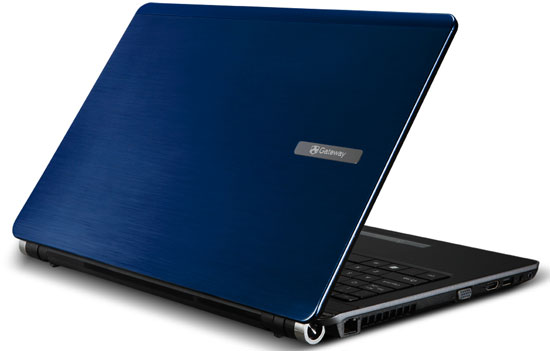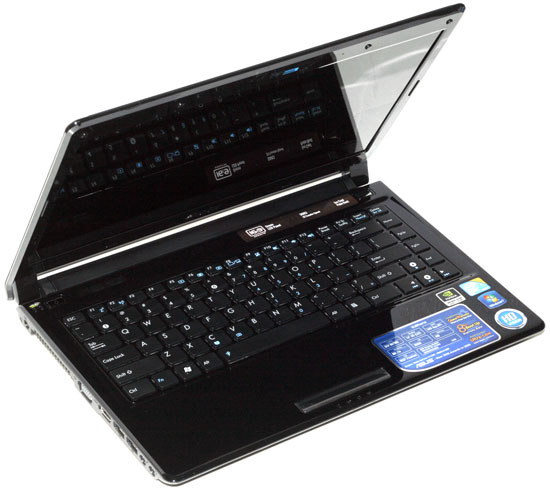Mobile Buyers' Guide, December 2009
by Jarred Walton on December 6, 2009 12:00 AM EST- Posted in
- Guides
Entry Level Laptops - $400 to $850
The next step up the pricing ladder opens up some additional possibilities, along with upgraded versions of the sub-$400 options. Some of the upgrades are more useful than others - more RAM or a larger hard drive is something you can add at any time to just about any laptop. A faster GPU, on the other hand, is something you either have for the life of a laptop or you don't. To date, no one has successfully implemented a laptop where you can upgrade the graphics as newer GPUs become available. Besides, even at $800 you shouldn't expect to get a good gaming laptop; you'll need to move to the next category for that.
Intel CULV Revisited
For us, by far the most interesting laptops in this price bracket are the many CULV offerings. With the additional pricing headroom, we are able to add quite a few options beyond the basic Celeron SU2300. Pentium SU4100 doubles the L2 cache to 2MB shared, with a 1.3GHz clock speed. The Core 2 SU7300 and SU9000 chips move to 3MB of shared cache; the SU7300 is clocked at 1.3GHz while the SU9300 is 1.2GHz, the SU9400 is 1.4GHz, and the SU9600 is 1.6GHz. These CPUs are faster than the SU2300, yes, but they do increase the cost of laptops quite a bit. Since the CPUs aren't upgradeable, however, getting a faster CPU may be a worthwhile investment.
Along with upgraded CPUs, CULV laptops are available in sizes ranging from 11.6" up to 15.6", with 13.3" and 14.0" models in between. Most of these laptops offer the same 1366x768 resolution, so it's a matter of getting a larger keyboard and pixels. The 14" and larger options also include optical drives on most models.
Storage and memory options also receive upgrades, with 3GB and 4GB RAM configurations and hard drive sizes ranging from 250GB to 500GB. Unless price considerations prevent it, we recommend 4GB models so you won't have to worry about memory upgrades. We also recommend trying to get a DDR3-based laptop rather than DDR2, since DDR3 uses less power (voltage) and thus improves battery life (all other areas being equal). Hard drives are all basically the same, unless you move to SSDs. If you want an SSD in place of a conventional HDD, consider adding the drive on your own after purchase - most vendors continue to charge a premium for factory installed SSDs, and if you're not careful you could get one of the less desirable SSDs where performance substantially degrades over time.

What CULV laptops do we like? We've got Acer Timeline 1810 and Gateway EC5409u reviews in the works (aluminum cover = yummy!), and both the Acer Timeline and Gateway EC lines are good options (provided you stick with dual-core models). We also have the Dell Inspiron 11z undergoing testing. The systems we've tested all meet the advertised battery life figures (6+ hours), albeit mostly in less demanding tests.
There's also the Lenovo U Series, which appears slightly more expensive but we know a lot of people who like the Lenovo aesthetic. You can pretty much choose any of these laptops based on features and price and you'll get a good long-battery-life laptop.
Our Favorite CULV Laptop

Another laptop we're reviewing is the ASUS UL80Vt. It improves upon the competition in a number of ways. First, ASUS allows CPU overclocking, taking the SU7300 from 1.30GHz up to 1.73GHz - a 33% overclock. This will reduce battery life by about 10% at most; it's 5% or less in more demanding tests, which is a fair trade.
The second big feature is that ASUS includes integrated GMA 4500MHD graphics as well as GeForce G210M discrete graphics, with the ability to switch between the two options on the fly (it takes about three seconds to turn off the discrete GPU and 15 seconds to turn it back on). The G210M isn't a high-performance gaming solution, but when combined with the overclocked SU7300 it will handle nearly any current title, albeit at lower detail settings.
Perhaps the biggest selling point of the UL80Vt is its stellar battery life, helped by an 83Wh battery. Running at stock CPU speed and using the integrated graphics, we have achieved idle battery life of up to 14 hours and Internet battery life of around 8.5 hours. Nothing else we've seen can come close to the flexibility and battery life.
The UL80Vt cost is quite a bit higher than competing solutions, and the laptop isn't "perfect". At just over $800, we feel that the poor contrast ratio (like most other laptops) could have easily been improved. The chassis build quality is also somewhat questionable, showing more flex and torque than we'd like, but it's not bad by any means. All of the other features make the UL80Vt a great laptop. Our full review is still in the works, but the UL80Vt has earned an Editors' Choice award and is currently our favorite laptop in the ~$800 price range.










49 Comments
View All Comments
notanakin - Monday, December 7, 2009 - link
Sorry - here's the link: http://pzportal.net/main/2009/11/notebooks-price-l...">http://pzportal.net/main/2009/11/notebooks-price-l...Roland00 - Sunday, December 6, 2009 - link
I seconded this, I just bought the dual core su2300 model, and have no complaints so far about it besides the horrible viewing vertical angles due to the tn panel and glossy.I am very surprised on how fast the processor is for normal every day tasks. It isn't my overclocked I7 but for most everyday tasks you wouldn't care about the difference. This is what my opinon the netbook experience was supposed to be, save the atoms for things such as cell phones, gps, blu ray players etc.
ImSpartacus - Sunday, December 6, 2009 - link
I tried my best to goad my parents into getting my little sister a 1410 for her first laptop back when the SU2300 model was $399 (free shipping) on Newegg. They didn't want to buy it early.Then it ballooned to $409 (no free shipping) and they felt cheated.
They ended up getting a bare-bones SL410 for it's ruggedness.
AgeOfPanic - Sunday, December 6, 2009 - link
It ballooned by 10 dollars? 10 Dollars is not ballooning, it's 10 dollars.bennyg - Sunday, December 6, 2009 - link
Shipping.Just to compound your useless comment with another.
GoodRevrnd - Sunday, December 6, 2009 - link
I have much interest in the 1410 and am thinking it might be a good replacement laptop for my g/f. It is ridiculous what you get in this thing considering what I paid for my Vaio Z a year ago (granted the screen on it is to die for).KikassAssassin - Sunday, December 6, 2009 - link
I'm curious about your statement that "(it takes about three seconds to turn off the discrete GPU and 15 seconds to turn it back on)" on the UL80Vt, because that hasn't been my experience at all. My UL80Vt takes the same amount of time to switch from the Intel to the nVidia GPU as it does to switch from the nVidia to the Intel GPU: About three to four seconds, both ways.The only time I've had it take longer is if I have a 3D game running when I try to switch graphics modes, in which case it forces me to close the game before it'll switch.
JarredWalton - Sunday, December 6, 2009 - link
Well, I can't even verify the time right now, since after updating the Intel and NVIDIA drivers I can't get the Hybrid GPU feature to work. Need to fix that and then I'll confirm, but I know that it took significantly longer to enable G210M at least the few times where I paid attention. I'll confirm when I get the driver situation sorted out. :)feelingshorter - Sunday, December 6, 2009 - link
Try doing the test with all programs closed since i suspect that your running the flash 10.1 with GPU support, or even programs like the Zune software uses GPU acceleration. These little things might affect it. Maybe even having Win7 Aero on/off might make a difference. Looking forward to the full review of UL80Vt.Now back to studying exams at 4:10 AM...